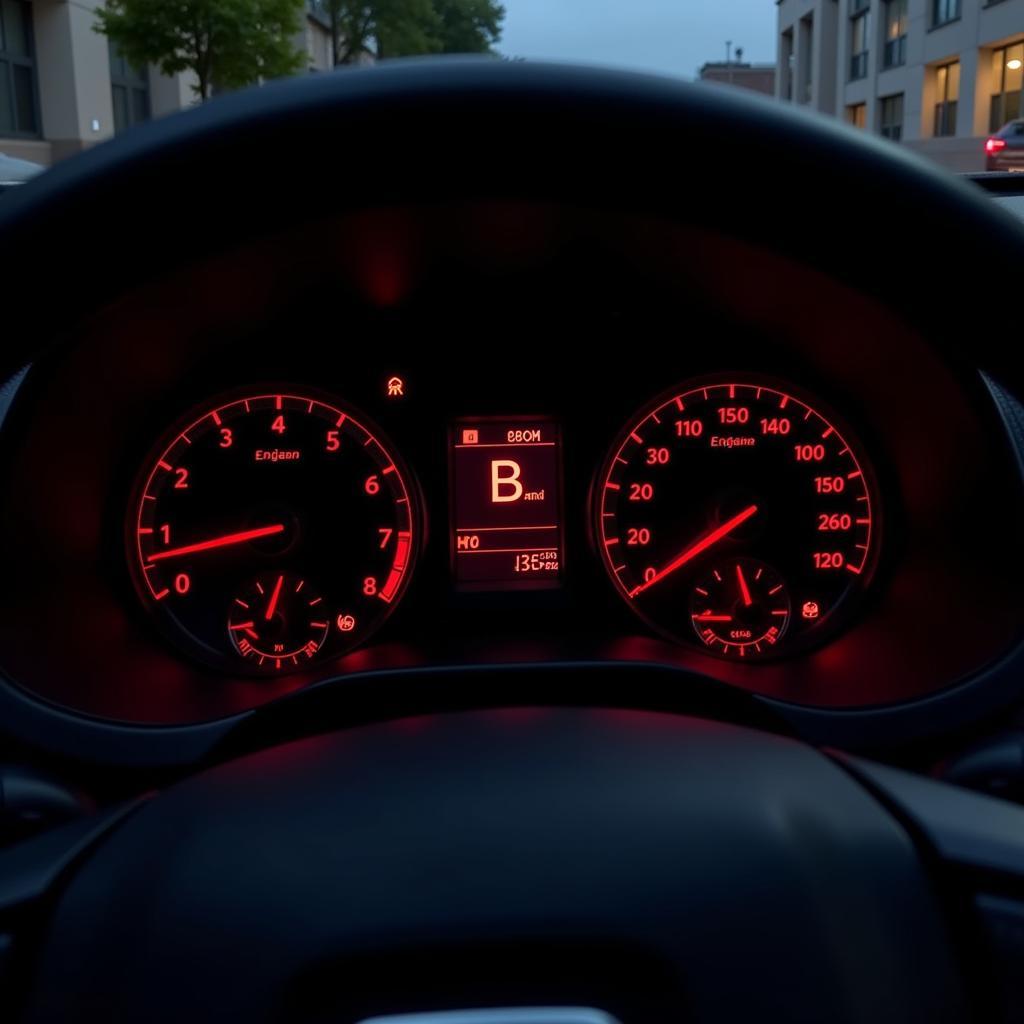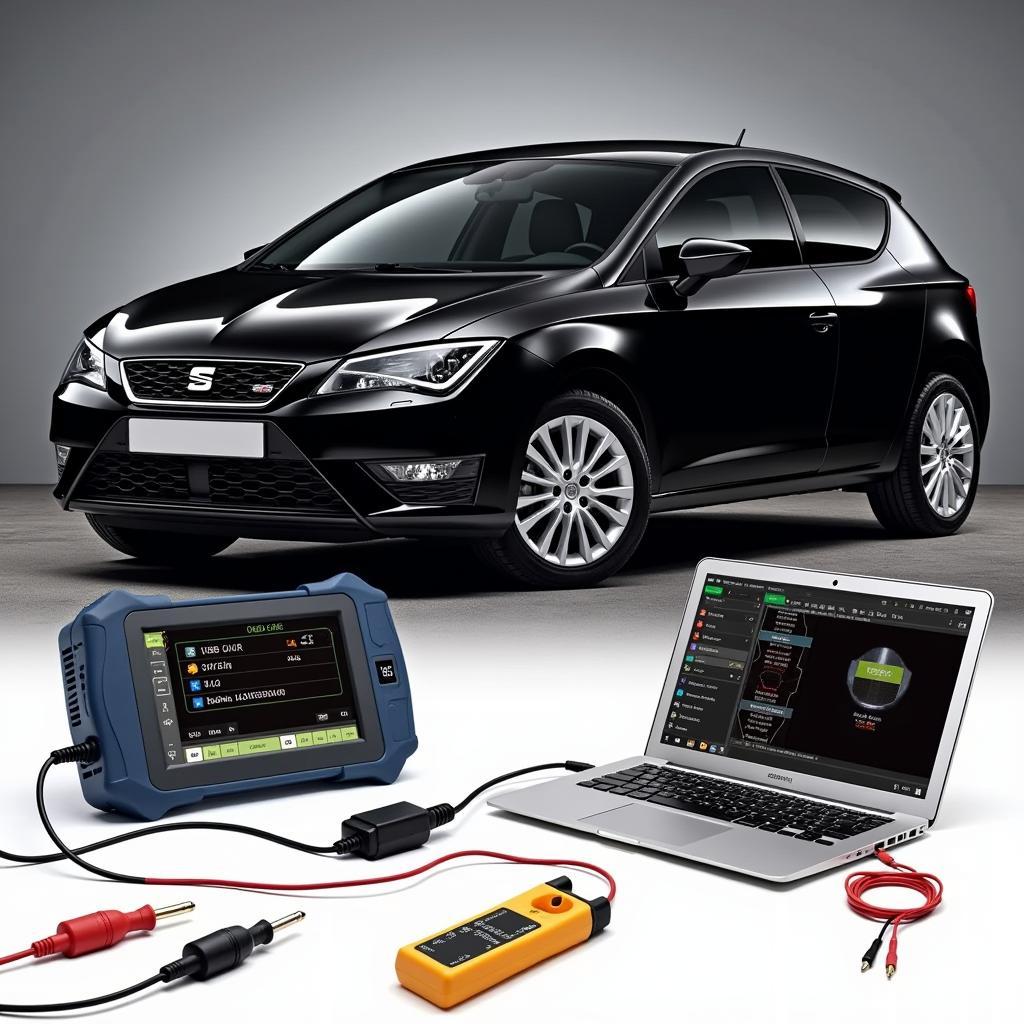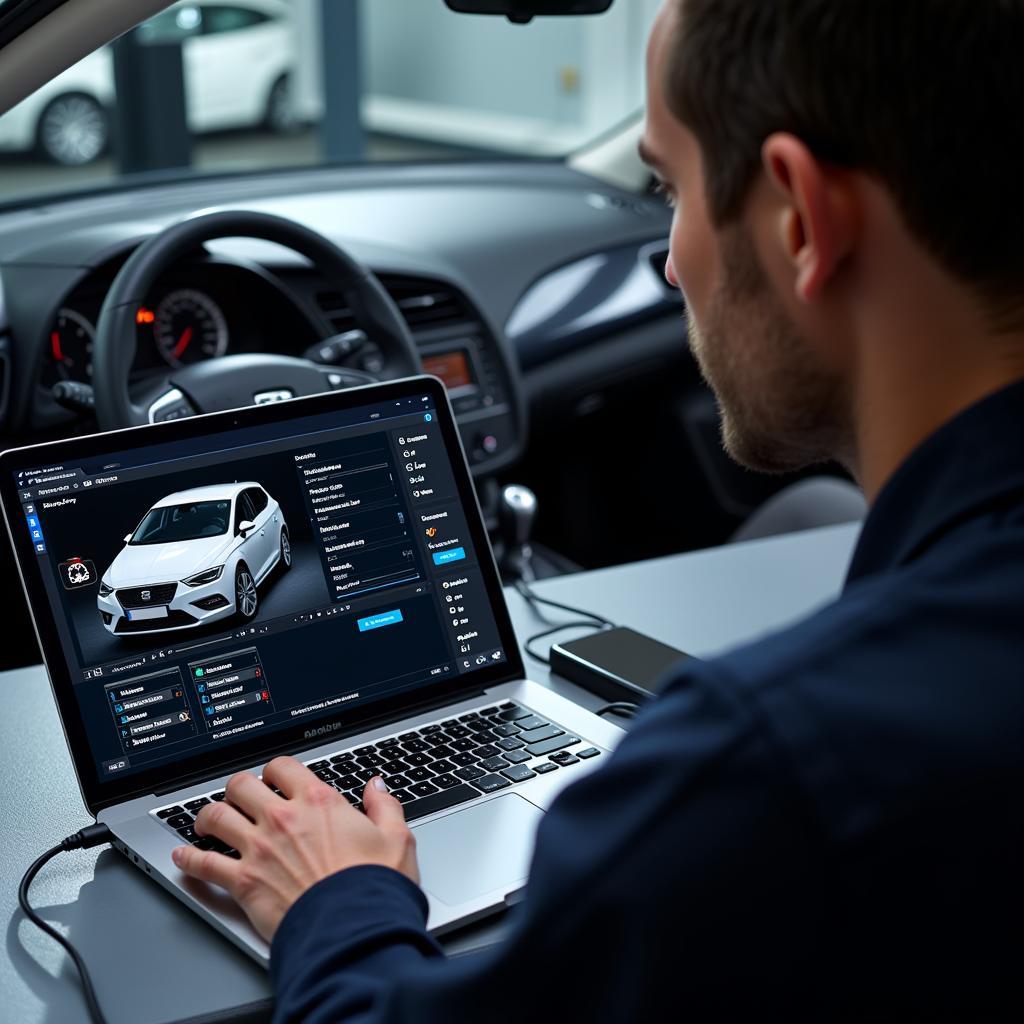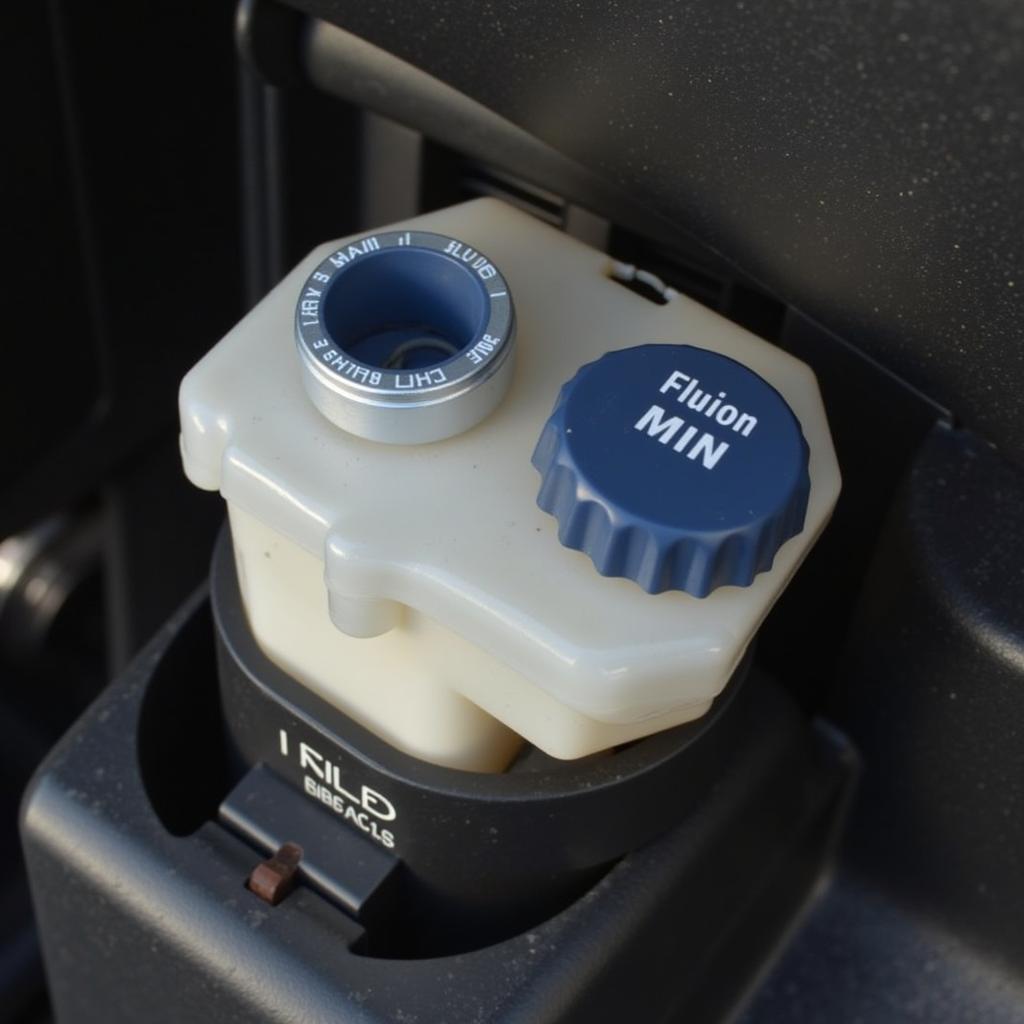The dreaded engine warning light on your Seat Leon Cupra can be a source of anxiety. This guide provides expert advice on diagnosing and resolving the issue, from simple checks to advanced remote diagnostics and software solutions. We’ll cover everything you need to know to get your Cupra back on the road.
Understanding why your Seat Leon Cupra engine warning light is illuminated is crucial. This amber light signals a potential problem within your engine management system, which could range from a minor sensor malfunction to a more serious mechanical issue. Ignoring it could lead to further damage and costly repairs. We’ll delve into the common causes, diagnostic procedures, and potential solutions, empowering you to address the issue effectively.
Decoding the Seat Leon Cupra Engine Warning Light
The engine warning light is your car’s way of communicating a problem. It doesn’t pinpoint the exact issue, but rather indicates that the engine control unit (ECU) has detected an anomaly. This could relate to various systems, including fuel delivery, emissions, ignition, or even the cooling system.
What should you do when the light comes on? First, don’t panic. Pull over safely when possible and check your owner’s manual. It might offer specific advice for your model year. While sometimes a loose gas cap can trigger the light, more often, it signifies a deeper issue requiring further investigation.
Sometimes, the warning light may flash intermittently. This usually indicates a more serious problem requiring immediate attention. Continuing to drive with a flashing engine warning light can cause severe damage to your catalytic converter or other vital engine components.
 Seat Leon Cupra Engine Warning Light Dashboard
Seat Leon Cupra Engine Warning Light Dashboard
Common Causes of the Engine Warning Light in a Seat Leon Cupra
Several factors can trigger the engine warning light in a Seat Leon Cupra. Here are some of the most common culprits:
-
Faulty Oxygen Sensor: The oxygen sensor monitors the exhaust gases to ensure optimal fuel combustion. A malfunctioning sensor can negatively impact fuel efficiency and emissions.
-
Mass Airflow Sensor (MAF) Issues: The MAF sensor measures the amount of air entering the engine. A faulty MAF sensor can lead to incorrect air/fuel mixtures, affecting performance and fuel economy.
-
Catalytic Converter Problems: The catalytic converter reduces harmful emissions. A damaged or clogged converter can trigger the warning light and impact engine performance.
-
Spark Plug or Ignition Coil Malfunction: These components are essential for igniting the air/fuel mixture in the cylinders. Faulty spark plugs or ignition coils can cause misfires and reduced power.
-
Loose or Damaged Gas Cap: A loose or damaged gas cap can cause fuel vapor leaks, triggering the engine warning light due to emissions issues. This is a simple fix, but it’s important not to dismiss it.
 Seat Leon Cupra Diagnostic Tools
Seat Leon Cupra Diagnostic Tools
Diagnosing the Problem: From DIY to Professional Help
While some issues, like a loose gas cap, are easy to identify and fix, others require more advanced diagnostics. Here’s a step-by-step approach:
-
Check the Gas Cap: Ensure the gas cap is securely tightened. If it’s loose or damaged, replace it.
-
Visual Inspection: Inspect the engine compartment for any loose wires, hoses, or visible damage.
-
OBD-II Scanner: Use an OBD-II scanner to retrieve diagnostic trouble codes (DTCs) from the ECU. These codes provide clues about the source of the problem.
-
Professional Diagnostics: If the issue persists or the DTCs are complex, seek professional help. A qualified technician can perform more in-depth diagnostics using specialized equipment. Check if you need to address a diesel particulate filter warning light seat leon.
For further information on Seat Leon Cupra warning lights, refer to this resource: seat leon cupra warning lights.
Remote Diagnostics and Software Solutions: The Future of Car Repair
Modern technology allows for remote diagnostics and software updates, often resolving issues without a physical visit to a workshop. This is particularly beneficial for addressing software glitches or sensor recalibrations. Our specialized remote services can diagnose and fix many engine warning light issues remotely, saving you time and money.
 Seat Leon Cupra Remote Diagnostics
Seat Leon Cupra Remote Diagnostics
What if it’s the Particulate Filter?
Sometimes, the engine warning light can be related to the particulate filter, especially in diesel engines. Understanding the seat leon particulate filter warning light is important for addressing this specific issue.
“Ignoring the engine warning light can lead to more significant and costly problems down the road. Proactive diagnostics and timely repairs are crucial for maintaining the health and performance of your Seat Leon Cupra.” – John Miller, Automotive Diagnostic Specialist
Conclusion
Addressing the seat leon cupra engine warning light promptly is essential for preserving your vehicle’s performance and longevity. By understanding the potential causes, utilizing appropriate diagnostic methods, and seeking professional assistance when needed, you can effectively resolve the issue and enjoy worry-free driving.
FAQ
-
Can I drive with the engine warning light on? While you can sometimes drive short distances, it’s best to address the issue promptly to avoid further damage.
-
How expensive is it to fix an engine warning light issue? Costs vary depending on the underlying problem, ranging from a simple fix like a loose gas cap to more complex repairs.
-
What is an OBD-II scanner? An OBD-II scanner is a device that retrieves diagnostic trouble codes from your car’s ECU, helping pinpoint the source of the problem.
-
Can remote diagnostics fix all engine warning light issues? While remote diagnostics can address many software and sensor-related problems, some issues require physical inspection and repair.
-
How often should I check my engine warning light? The engine warning light should illuminate briefly when you start the car and then turn off. If it stays on or flashes, it requires attention.
-
Is it safe to ignore a flashing engine warning light? No. A flashing engine warning light indicates a serious problem that requires immediate attention.
-
What is the difference between a solid and a flashing engine warning light? A solid light usually indicates a less severe issue, while a flashing light signals a more serious problem requiring immediate attention.


